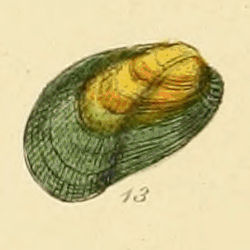| Musculus discors | |
|---|---|
 | |
| Scientific classification | |
| Kingdom: | Animalia |
| Phylum: | Mollusca |
| Class: | Bivalvia |
| Order: | Mytilida |
| Family: | Mytilidae |
| Genus: | Musculus |
| Species: | M. discors |
| Binomial name | |
| Musculus discors (Linnaeus, 12th edition of Systema Naturae, 1767) | |
Musculus discors, or the discord mussel, is a species of bivalve mollusc in the family Mytilidae. It can be found along the Atlantic coast. In North America it ranges from Labrador to Long Island Sound, [1] around Alaska and in northern European waters, including around most of the coast of Britain. [2] It is a global IUCN Red List species, and of national conservation importance within Great Britain. [3]